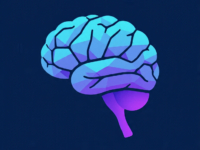
How AI Is Reshaping the Internet
Remember a time when the internet was a vast, uncurated wilderness? You’d type a keyword into a search engine, cross your fingers, and sift through countless irrelevant links to find what you needed. Or perhaps you remember dial-up, the distinct screech of a modem connecting, and the agonizing wait for a single image to load. The internet has always been a marvel of information and connection, but it’s constantly evolving. Today, a new, incredibly powerful force is driving its transformation: Artificial Intelligence (AI).
AI is not just augmenting the internet; it’s fundamentally reshaping it. From how we search for information and consume content to how we interact with online services and even how secure our digital lives are, AI is weaving itself into the very fabric of the web. This article will explore the profound ways AI is altering our online experience, making it smarter, more personalized, and undeniably different from the internet we knew just a few years ago.
Background and Context: The Internet Before AI’s Dominance
For decades, the internet functioned largely as a static repository of information. Websites were designed with fixed layouts, and search engines primarily relied on keyword matching and backlink profiles to rank pages. User experience, while improving with faster connections and better web design tools, was still largely a “one-size-fits-all” affair.
Think about the early days:
- Search: You typed in exact keywords, and the results were often literal matches, not always understanding your true intent.
- Content: Websites were built manually, and content was mostly static. Updates were often infrequent.
- Personalization: Limited to basic cookies remembering your login or shopping cart items. Recommendations were rudimentary at best.
- Customer Service: Mostly manual, requiring phone calls, emails, or waiting for a human chat agent.
- Security: Relying heavily on signature-based detection for viruses and rule-based firewalls.
The advent of big data and significant advancements in machine learning, especially deep learning, changed the game. AI started moving beyond niche applications to become a core component of internet infrastructure and user-facing features. This shift marks a pivotal moment, transitioning the internet from a reactive system to a proactive, intelligent, and highly adaptive environment.
Key Ways AI Is Reshaping the Internet
The influence of AI is pervasive, touching almost every layer of the internet. Here are some of the most significant areas of transformation:
1. Hyper-Personalization and User Experience
Gone are the days of generic online experiences. AI is driving a profound shift towards hyper-personalization:
- Adaptive Websites and Apps: Websites now dynamically adapt their layouts, content, and offerings based on your Browse history, location, device, and real-time intent signals. An e-commerce site might show different product recommendations or promotions to you versus another user, tailored to your perceived preferences.
- Content Curation: AI algorithms analyze your consumption patterns to curate feeds on social media, news platforms, and streaming services, ensuring you see content most relevant and engaging to you. This includes filtering out irrelevant noise and highlighting what truly matters.
- Conversational Interfaces: AI-powered chatbots and virtual assistants provide instant, intelligent support on websites and apps, understanding natural language queries and offering proactive suggestions. This moves interactions from rigid menus to fluid conversations.
2. Smarter Search and Discovery
Search engines are perhaps the most visible example of how AI is reshaping the internet. They’ve evolved from simple keyword matchers to intelligent answer engines:
- Understanding User Intent: AI models like Google’s BERT and Gemini now analyze the context and semantics of your search queries, understanding your true intent even if your keywords aren’t precise.
- AI Overviews/Generative Search: Instead of just links, you often get AI-generated summaries directly in search results, providing instant answers without needing to click through multiple websites. This is a massive shift, fundamentally changing how users interact with search.
- Multimodal Search: AI enables search beyond text. Voice search is more accurate and conversational, and visual search allows you to upload images to find similar products or information.
3. Automated Content Creation and Optimization
AI is not just helping us find content; it’s helping create it:
- Generative AI for Text and Visuals: AI tools can now generate articles, blog posts, product descriptions, social media content, images, and even videos at scale. This vastly increases content volume and allows for quick adaptation to trends.
- SEO Enhancement: AI assists in identifying relevant keywords, analyzing content structure for readability, and suggesting improvements for better search engine visibility. It helps optimize content for both human readers and AI-powered search algorithms.
- Localization and Translation: AI-powered tools provide near real-time translation and localization of web content, breaking down language barriers and making the internet truly global.
4. Enhanced Cybersecurity and Fraud Detection
The increasing sophistication of cyber threats demands equally sophisticated defenses, and AI is at the forefront:
- Real-time Threat Detection: AI systems monitor network traffic and user behavior patterns 24/7, identifying anomalies and malicious activities much faster and more accurately than human analysts.
- Predictive Analytics: AI can analyze historical data to anticipate potential vulnerabilities and future attack vectors, allowing organizations to proactively strengthen their defenses.
- Automated Response: AI can automate routine security checks, block suspicious IP addresses, and respond to threats in real time, minimizing damage from attacks like phishing or malware.
- Fraud Prevention: In e-commerce and financial services, AI rapidly analyzes transaction data to detect and prevent fraudulent activities, protecting both businesses and consumers.
5. Network Optimization and Efficiency
Under the hood, AI is making the internet itself faster and more reliable:
- Traffic Management: AI algorithms optimize data routing and network traffic flow, reducing latency and ensuring smoother Browse and streaming experiences.
- Predictive Maintenance: AI can predict network failures before they occur, allowing providers to perform proactive maintenance and minimize downtime.
- Energy Efficiency: By optimizing data transfer and server loads, AI can contribute to reducing the energy consumption of data centers, leading to a more sustainable internet.
Detailed Comparison: Internet 2015 vs. Internet Today (AI-Driven)
Let’s take a snapshot of how the internet has transformed thanks to AI:
| Feature/Area | Internet in 2015 (Pre-AI Dominance) | Internet Today (AI-Driven) |
| Search Engine | Keyword-focused, less contextual understanding. | Context-aware, intent-driven, AI Overviews, multimodal search. |
| Personalization | Basic, based on Browse history/cookies. | Hyper-personalized, real-time adaptation, predictive. |
| Content Creation | Largely manual, human-centric. | Augmented by AI (generative text/images), automated summarization. |
| Customer Service | Mostly human agents, rigid chatbots. | AI-powered conversational chatbots, virtual assistants. |
| Cybersecurity | Signature-based detection, reactive. | AI-driven real-time threat detection, predictive analytics, automated response. |
| User Interface | Static layouts, less dynamic. | Dynamic, adaptive, conversational, voice-activated. |
| Ad Targeting | Broad demographics, basic behavioral. | Highly targeted, real-time intent-based, dynamic ad creative. |
Pros and Cons of AI Reshaping the Internet
While AI offers incredible advancements, its transformative power also brings challenges:
Pros:
- Enhanced User Experience: More relevant content, intuitive interfaces, and faster access to information.
- Increased Efficiency: Automation of tasks saves time for businesses and individuals.
- Accessibility: AI can make the internet more accessible for people with disabilities through voice control, intelligent captions, and simplified interfaces.
- Improved Security: Proactive threat detection and automated responses enhance digital safety.
- New Discoveries & Innovations: AI accelerates research and development across various fields by enabling rapid data analysis.
- Economic Growth: Drives new business models, services, and job categories within the digital economy.
Cons:
- Information Overload & Filter Bubbles: Hyper-personalization can lead to echo chambers, limiting exposure to diverse perspectives.
- Privacy Concerns: AI’s reliance on vast amounts of personal data raises questions about privacy and data security.
- Algorithmic Bias: If trained on biased data, AI can perpetuate and amplify societal biases in search results, content recommendations, or even job applications.
- Job Displacement: Automation of tasks may lead to job losses in certain sectors, requiring workforce reskilling.
- Authenticity and Misinformation: The ease of generating AI content (deepfakes, fake news) poses significant challenges to discerning truth from fiction online.
- Digital Divide: Unequal access to AI-powered internet services could widen existing societal inequalities.
- Over-reliance: Excessive dependence on AI for information and decision-making might diminish critical thinking skills.
Use Cases / Who Benefits from AI-Reshaping the Internet
Virtually everyone who uses the internet is impacted by how AI is reshaping the internet.
- Everyday Users: Benefit from smarter search, personalized content feeds, and more intuitive online interactions.
- Content Creators & Marketers: Leverage AI for content generation, SEO optimization, and targeted advertising, increasing reach and efficiency.
- E-commerce Businesses: Utilize AI for personalized shopping experiences, fraud detection, and predictive analytics to boost sales.
- Developers & Designers: Use AI tools for web design automation, bug detection, and optimizing user interfaces.
- Cybersecurity Professionals: Employ AI for threat intelligence, anomaly detection, and automated incident response.
- Educators & Researchers: Access vast amounts of information quickly, personalize learning experiences, and accelerate research.
- Healthcare Providers: Use AI for virtual assistants, patient engagement platforms, and secure data management.
- Governments & Public Services: Can use AI to improve citizen services, manage urban infrastructure, and enhance public safety through smart internet applications.
FAQs about How AI Is Reshaping the Internet
Q1: Is AI making the internet too personalized, creating “filter bubbles”?
Yes, there’s a valid concern about “filter bubbles” where AI’s personalization algorithms might limit exposure to diverse viewpoints. While it enhances relevance, it can inadvertently reduce serendipitous discovery and reinforce existing beliefs. Efforts are ongoing to balance personalization with diverse content exposure.
Q2: How does AI affect my privacy on the internet?
AI systems often require vast amounts of data, including personal Browse history and preferences, to function effectively. This raises privacy concerns. Regulations like GDPR and CCPA, alongside advancements in privacy-preserving AI (e.g., federated learning), are aiming to address these issues and give users more control over their data.
Q3: Will AI-generated content flood the internet and make it harder to find human-created content?
The rise of AI-generated content is indeed a growing trend. While it offers efficiency, concerns about quality, authenticity, and potential for misinformation are prevalent. Search engines are working on methods to identify and appropriately rank AI-generated content, and users are increasingly valuing authentic human creations.
Q4: How is AI making online shopping better?
AI enhances online shopping through hyper-personalized product recommendations, virtual try-on experiences, intelligent chatbots for customer support, dynamic pricing based on demand, and robust fraud detection systems, making the overall experience more efficient, convenient, and secure.
Q5: Is AI making the internet more secure or more vulnerable?
AI plays a dual role in cybersecurity. On one hand, it’s a powerful tool for detecting and preventing cyber threats in real-time, making the internet more secure. On the other hand, malicious actors can also leverage AI to create more sophisticated attacks (e.g., advanced phishing, deepfake scams), making the internet potentially more vulnerable to new types of threats.
Q6: How does AI influence what I see on social media?
AI algorithms are central to social media feeds. They analyze your past interactions (likes, shares, comments), the types of content you engage with, and even your mood (inferred from interactions) to curate a personalized feed designed to maximize your engagement. This influences the news, opinions, and trends you are exposed to.
Conclusion: A Smarter, More Dynamic Web
How AI is reshaping the internet is one of the most significant technological shifts of our time. It’s transforming the internet from a static collection of pages into a dynamic, intelligent, and deeply personalized ecosystem. We are experiencing a web that anticipates our needs, understands our queries, creates content on demand, and protects us from threats in ways previously unimaginable.
This transformation brings immense benefits, making our online lives more efficient, convenient, and tailored to our individual preferences. However, it also demands our collective attention to the challenges of privacy, bias, and the very nature of information authenticity.
Final Verdict: An Evolving Synergy
The internet of today, powered by AI, is a testament to an evolving synergy between human ingenuity and artificial intelligence. It’s not just about AI taking over; it’s about AI augmenting human capabilities and creating new possibilities. The ultimate success of this reshaping will depend on striking a balance – harnessing AI’s power for progress while establishing robust ethical guidelines and regulatory frameworks to ensure a fair, transparent, and trustworthy digital future. As users, our awareness and critical engagement with AI-driven technologies will be key to navigating this exciting, yet complex, new frontier.



















Leave a Reply